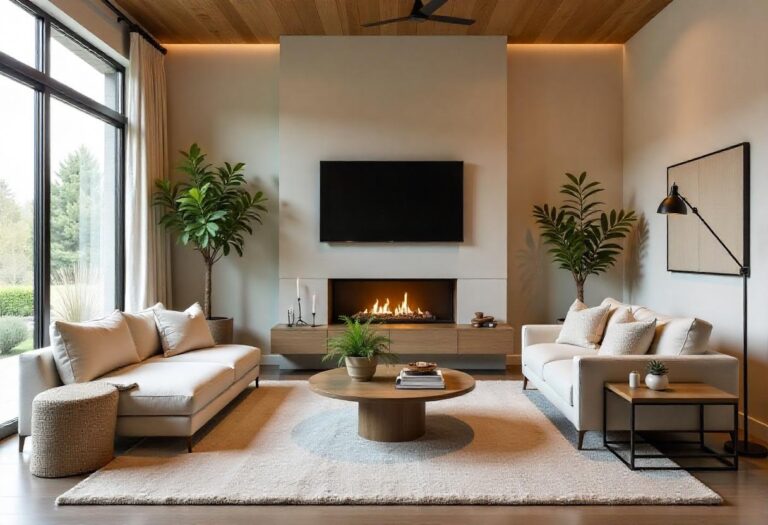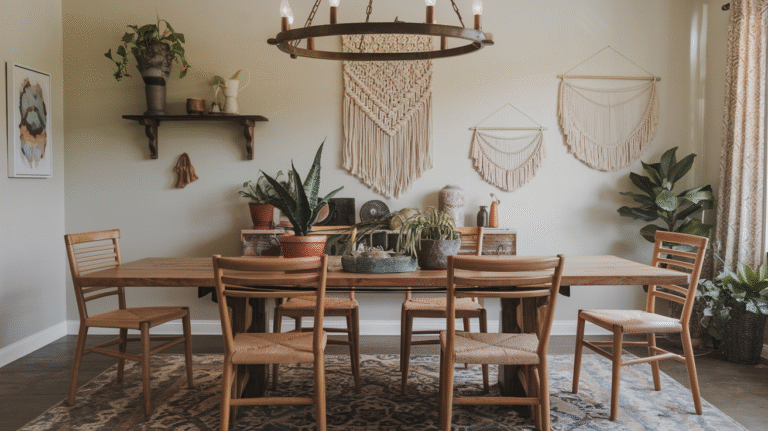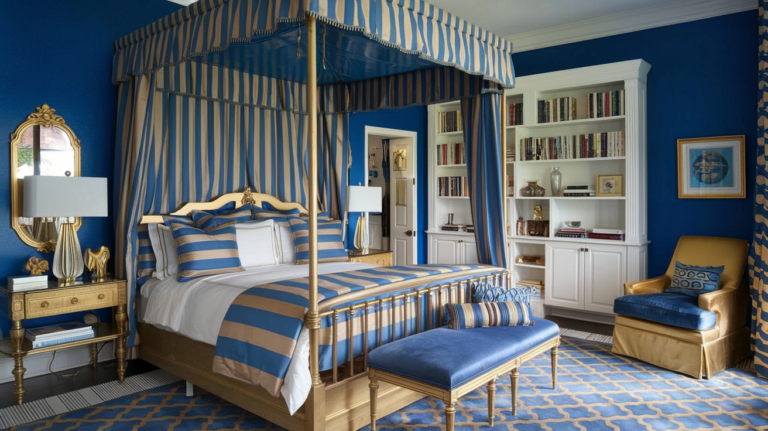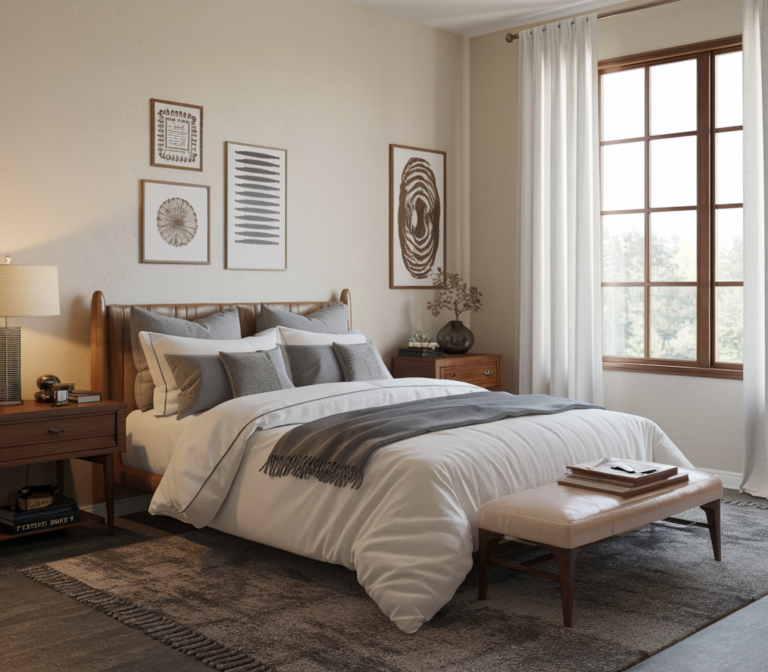23 Formal Dining Room Ideas
When it comes to formal dining rooms, there’s something deeply nostalgic about them. It’s the place where stories are passed, celebrations are toasted, and family dinners turn into lifelong memories. Designing a formal dining space isn’t just about placing a table and some chairs in a room—it’s about curating an experience. Whether you’re working with a grand dining hall or carving out elegance in a modest space, these 23 ideas will help you craft a timeless, refined, and unforgettable dining environment.
1. Embrace the Drama with a Statement Chandelier
Your chandelier is the crown jewel of your dining room. Opt for a dramatic crystal fixture or a bold modern design that immediately catches the eye. I once inherited a vintage chandelier from my grandmother—it wasn’t trendy, but every time guests saw it, their jaws dropped. That’s the kind of impact you want. Let your chandelier set the tone.
2. Go Bold with Deep, Rich Colors
Nothing says formal quite like moody, saturated hues. Think navy, charcoal, burgundy, or emerald green. These colors instantly add a layer of sophistication and intimacy. I once painted my dining room in a deep forest green, and it transformed dinner parties into something straight out of a classic novel.
3. Invest in an Oversized Dining Table
A large, commanding table becomes the anchor of your formal space. Choose solid wood—mahogany, walnut, or oak—for a traditional look. This isn’t the place for flimsy or extendable tables. A formal dining room deserves a permanent, substantial centerpiece.
4. Use Upholstered Dining Chairs for Comfort and Class
Formal dining doesn’t mean stiff. Upholstered chairs strike the perfect balance between elegance and comfort. Opt for tufted backs, velvet textures, or patterned fabrics. They invite guests to linger over conversation and dessert without feeling like they’re in a boardroom.
5. Add Wainscoting or Wall Molding
If your walls are bare, you’re missing a huge opportunity for detail. Wainscoting, panel molding, or picture frame molding can elevate even the simplest of spaces. It’s like adding a tailored suit to your walls—suddenly everything looks polished.
6. Create a Centerpiece That Commands Attention
A stunning centerpiece isn’t just a finishing touch—it’s the heart of your table. Consider seasonal arrangements, a dramatic floral display, or a sculptural bowl. Rotate them out occasionally. I once used a grouping of antique silver candlesticks from a flea market, and it turned heads every time.
7. Layer with Rugs for Texture and Warmth
A rug can define your dining space, especially if you have hardwood or tile flooring. Go for one that’s large enough to accommodate chairs even when pulled out. Persian rugs or neutral sisals are both timeless and elegant.
8. Use Mirrors to Reflect Light and Expand Space
Mirrors work like visual magic. A large mirror can make your room feel brighter, bigger, and grander. Try placing it across from a window or behind a buffet for maximum effect. It’s like giving your dining room a window where there wasn’t one.
9. Incorporate a Statement Sideboard or Buffet
A sideboard isn’t just functional—it’s a design opportunity. Use it to store linens and serveware, but don’t stop there. Style the top with vases, decanters, and art. It’s the kind of piece that can anchor a wall and hold your best hosting secrets.
10. Use Coordinated Tableware and Linens
There’s a particular joy in setting a table with intentional, matching tableware. Invest in quality plates, stemware, and linen napkins. They add that extra layer of formality and make every meal feel like a special event, even if it’s just spaghetti on a Tuesday night.
11. Add a Touch of Vintage Elegance
Incorporating antique or vintage elements—like a distressed hutch, a carved mirror, or brass candle holders—adds personality and charm. These pieces tell stories, spark conversation, and keep your space from feeling too sterile or showroom-like.
12. Set the Mood with Layered Lighting
Don’t just rely on overhead lighting. Add wall sconces, table lamps, or even candlelight to create mood. Dimmers are a must. The right lighting can transform your space from weekday formal to Saturday night spectacular.
13. Frame the Room with Luxurious Drapery
Heavy, lined curtains add instant gravitas. Go for floor-to-ceiling panels in velvet, silk, or linen blends. They soften the acoustics and give your space a theatrical richness—like curtains rising before a grand feast.
14. Curate Wall Art with Purpose
Formal dining rooms are often the best place for bold, oversized art. Whether it’s a portrait, a contemporary abstract, or a classic oil painting, choose pieces that elevate the aesthetic. I once hung a massive black-and-white photograph of Paris, and it’s still the most complimented item in the room.
15. Add Architectural Interest with Ceiling Details
Look up—your ceiling wants attention, too. Coffered ceilings, medallions, or wood beams can create dimension and depth. If you’re not up for a full reno, even a subtle ceiling paint in a contrasting hue adds unexpected elegance.
16. Incorporate Built-In Shelving or a Display Hutch
For those with space, a built-in china cabinet or display hutch can showcase your finest dishes or collectibles. It adds both function and formal charm. Rotate what you display to keep things fresh and seasonal.
17. Mix Classic and Modern Styles
There’s something compelling about combining old-world formality with modern flair. A sleek table with antique chairs, or a traditional chandelier above a minimalist setting, creates a dynamic tension that keeps the room interesting.
18. Don’t Shy Away from Wallpaper
Wallpaper is back, and it’s beautiful. Bold patterns, metallic finishes, or textured grasscloth can all work in a formal dining space. Choose something timeless, not trendy. I once wallpapered a room in deep navy with gold floral motifs—it felt like dining inside a jewel box.
19. Float a Centered Dining Room Layout
Avoid cramming your dining table against walls. Let it float in the center, framed by a rug and surrounded by balanced lighting and furniture. It creates flow and makes the room feel intentional rather than leftover.
20. Choose Sculptural or Designer Chairs
Make your seating a focal point. Chairs with distinctive shapes, carved backs, or unique fabrics can bring artistic energy into the room. Think of them as guests that never leave—they should look sharp and sit comfortably.
21. Anchor the Room with Symmetry
Symmetry adds harmony to formal rooms. Try flanking your buffet with matching lamps or sconces, or placing art and furniture in mirrored pairs. The result feels calm, controlled, and deeply elegant.
22. Add a Bar Cart or Beverage Station
Even in formal settings, having a stylish bar cart adds hospitality. It’s a nod to classic entertaining and can double as a conversation starter. Stock it with glassware, mixers, and your best decanters.
23. Let the Architecture Shine
If your home has unique architectural features—like arched doorways, original crown molding, or vintage floors—highlight them. Don’t cover up the bones of your space. Instead, build your dining room design around them.
Closing Thoughts: Formal Dining Doesn’t Mean Boring
Too often, formal dining rooms get a reputation for being stiff or outdated. But in truth, they’re a canvas for creativity, tradition, and hospitality. Your formal dining room should feel like an invitation—not to impress, but to welcome. With the right blend of elegance, comfort, and personality, it becomes more than a place to eat. It becomes a stage for celebration, storytelling, and connection.
So go ahead—light the candles, bring out the good plates, and design a room that feels like a standing ovation in dining form.




